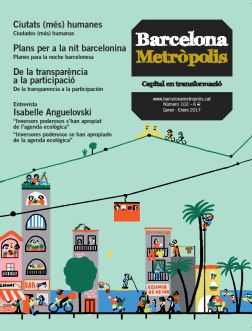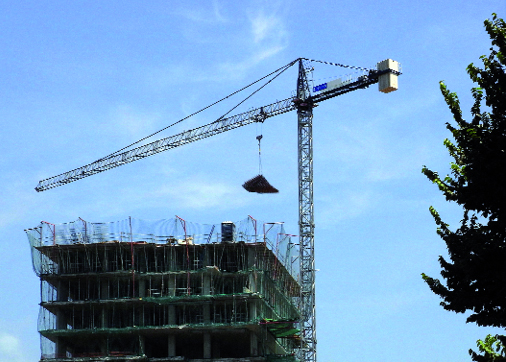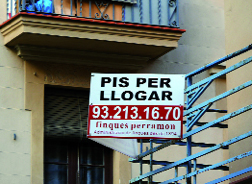Aside from sociological, cultural and demographic factors, we should be focusing on urban planning, housing and the property market as factors in social cohesion in the city or, to the contrary, in social segregation.
Living in a city is what a very large part of the population wants to do – 74% of Europeans and 77% of Spaniards – and these numbers are growing. The reasons for this are wide-ranging, but we do know that some of major ones are the desire for company, easy access to services, and the enriching experience of having a broad network of relationships and of being open to yet more, but also the desire for anonymity or privacy. Ultimately, it is the desire to escape loneliness, isolation and the ghetto, and gain freedom of movement and of action. So a city’s cohesion depends on being able to ensure that all these desires are met, at least for as many people as possible.
The main obstacles to cohesion include all the processes that lead one or more parts of the urban population into unwanted situations of isolation and loneliness, of being shut out and excluded, with difficulties for creating social relationships and a harsh representation of differences. For all these reasons, we need to make a clear distinction between diversity, which is the basic source of human wealth in cities, and inequality, when it involves the inability to overcome differences that are unavoidable from the start and, thus, to overcome the continuation or even the exacerbation of these differences.
The sight of growing inequality – especially economic – particularly in the recession that we have been experiencing since 2008, is worrying because it makes cohesion more difficult.
Aside from sociological, cultural and demographic factors, which obviously all have an impact on the processes that generate inequality, we should be focusing on urban planning, housing and the property market, as they are the architects or main drivers of cohesion or, to the contrary, of social segregation.
Urban planning is indeed a double-edged sword: it can help to design cohesive, integrated and mixed cities or it can feed processes of exclusion as it designates particular zones for different levels of society, leading to compartmentalisation and spatial segregation.
We are all familiar with exemplary well-designed cities that have become landmarks of cohesion, because this desire was already inherent in the planning stage. The democratic principle, when reflected in integrational design plans, provides for cohesive living and more solidarity. But we are also familiar with cities in which the aim has been to keep different sections of the population, according to income, origin or social class, clearly separate from each other. These are cities without solidarity that do not realize that this split, as well as being morally reprehensible, is one of the biggest risk factors in destabilisation, conflict and social infighting.
One version of the development of non-cohesive cities involves undergoing growth – total or partial – that is not in line with any prior thinking translated into planning. Instead, it is ad-hoc, disorderly, uncontrolled, with terrible urban planning structures and weak or non-existent standards for building quality. Many of our neighbourhoods are unfortunately set apart because they are dragging with them the mistakes that were made at the outset and that have then determined the way they have evolved over time, even when they have often undergone processes of urban regeneration.
But the property market – inextricably linked to the urban design and construction expects of homes – has helped to perpetuate and exacerbate the differences between areas. Poor quality housing stock, whether due to low-standard construction at the outset or old and badly maintained buildings, is one of the wounds that let in the virus of inequality: the people that live in run-down neighbourhoods want to leave them and they do so at the first opportunity, making way for new residents that are usually even worse off. This phenomenon is also reinforced by other factors such as, for example, the arrival of a new community that is difficult to integrate, pushing out the original residents even faster. These neighbourhoods become de facto ghettos that easily fall into a downward spiral that makes them even worse off.
The price of housing, a new factor in social exclusion
In recent years, we have been clearly seeing the deepening inequality in our cities, firstly due to the housing bubble and later, because of the financial crisis. The gap that opened up between the price of housing and the household salaries while the bubble was growing has not closed during the recession, because the beneficial effect that the fall in house prices would have had (both to buy and to rent) was cancelled out by the fall in income. And, because we can see a strong correlation between lower income and the impact of housing costs, the latter has become a new element of social exclusion and inequality in the sense that it has gone further and further away from what households can reasonably afford, especially in neighbourhoods or areas where there is greater job instability and lower rates of income.
The lack of a housing policy that balances out the disruptive effects of the property market with a supply of affordable housing for those who cannot keep up with the pace of the market, means that in some neighbourhoods or areas there is a much higher concentration of people subjected to a two-fold punishment: less financial resources and more unemployment and, at the same time, a higher relative cost of housing. Ultimately, it means that there is a greater concentration of people threatened with poverty.
The European Commission defines families who are overburdened in paying housing costs, in other words, who spend more than 40% of their income on housing and utilities, as being at risk of social exclusion. In Spain, the percentage of people who are overburdened by housing costs now sits at 10.3%, but this drops to 0.2% for households in the higher income brackets, and up to 41% in lower income households. When it comes to families living in market-rate rental homes (99% of all property rentals in our cities), the percentage of overburdened households goes up to 50.4% – the highest rate of any European country.
It will not be possible to make realistic plans to fight social inequality of we do not put housing insecurity and economic hardship stemming from housing costs that affects so many families, right at the centre of the debate. Equal opportunity ends up being completely infringed not just by the widely accepted variables of education and the job market, but also by the availability – or lack – of affordable housing.






